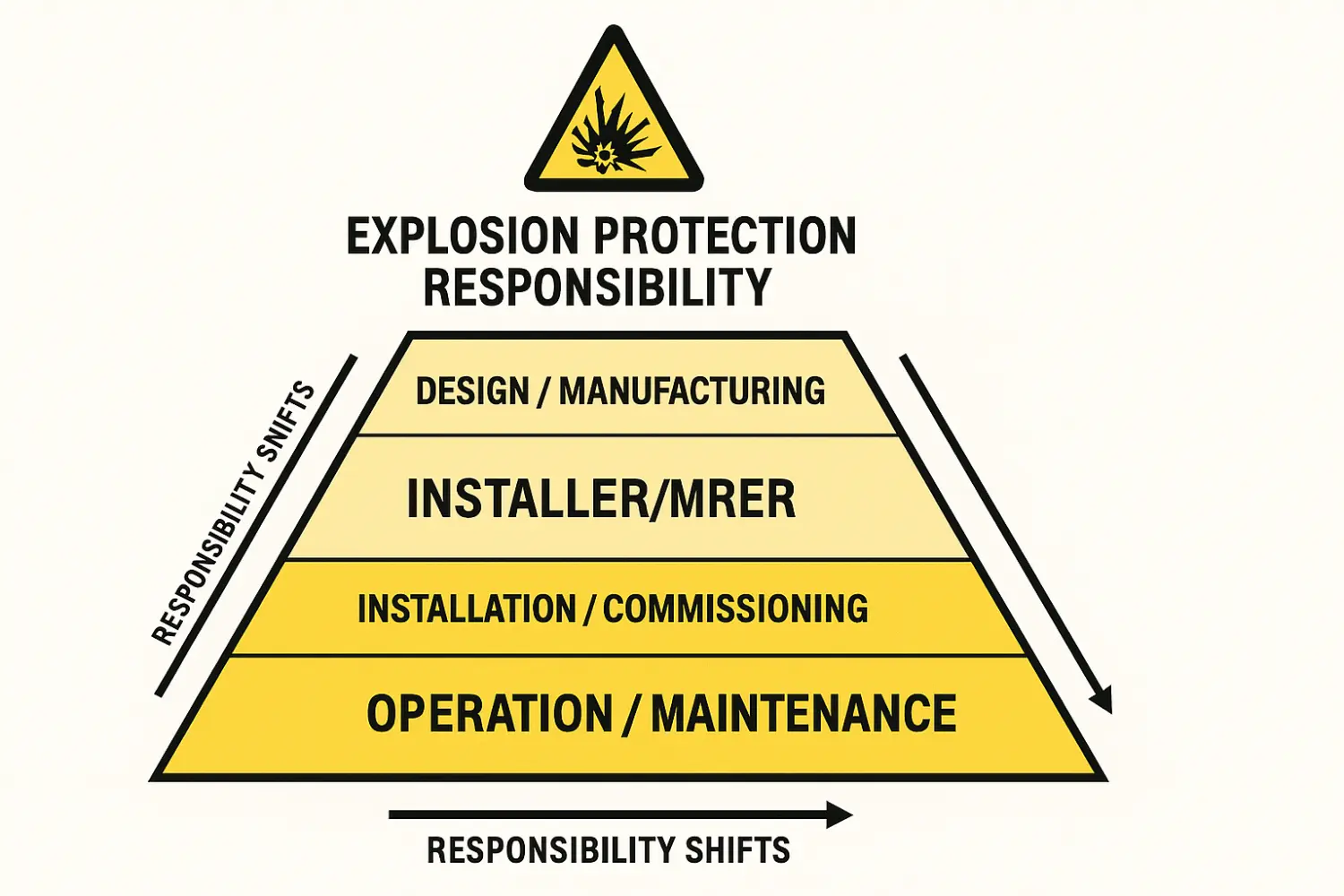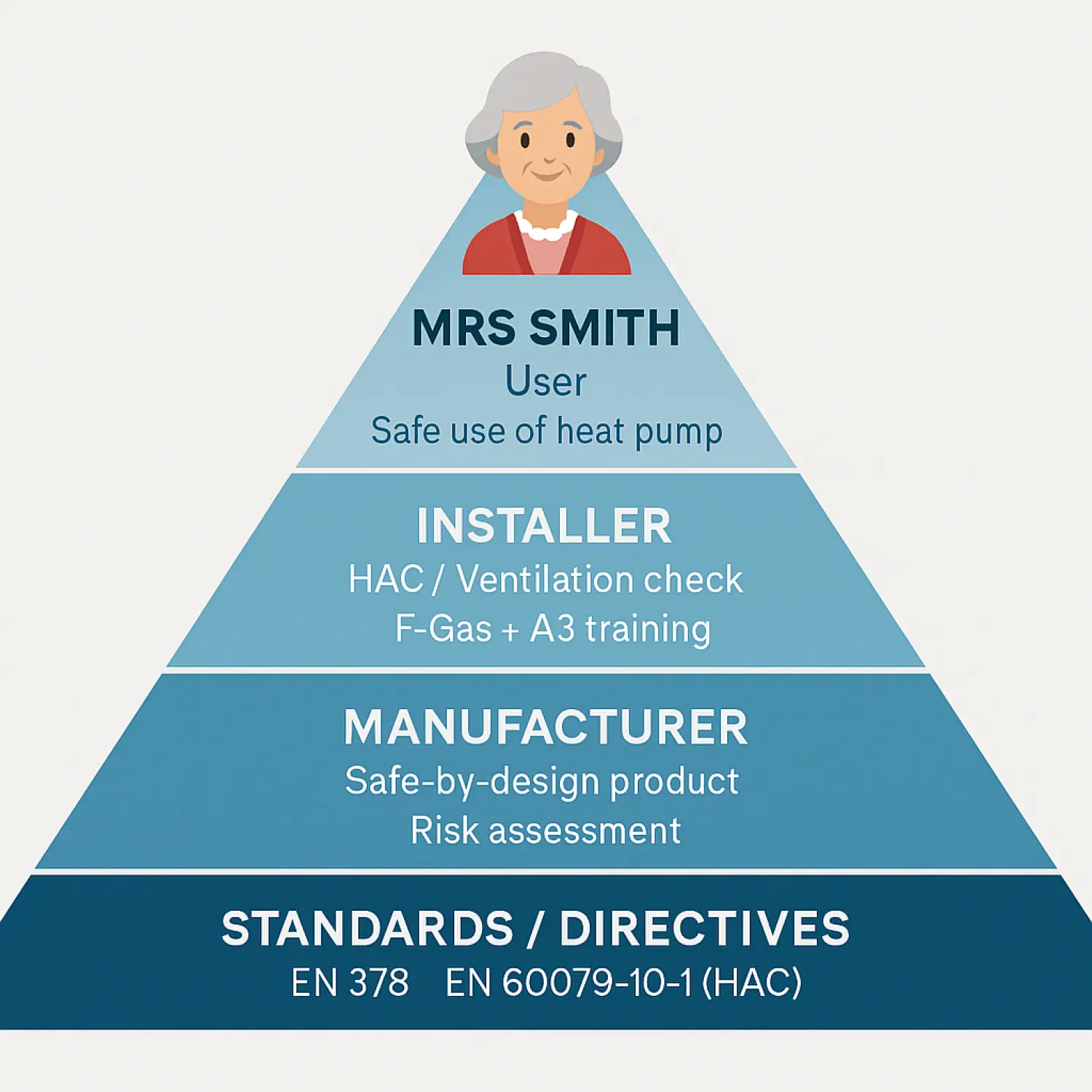

ATEX = industrial law, not household.
But ATEX principles still apply wherever a flammable gas can leak — including your R290 (propane) heat pump at home.
1. The Difference
|
Aspect |
Industrial |
Household |
|
Legal basis |
ATEX 2014/34/EU + 1999/92/EC |
LVD + EN 378 + EN 60335 |
|
Operator |
Trained personnel |
"Mrs Smith" – untrained user |
|
Zoning |
Mandatory (EN 60079-10-1) |
Required if flammable refrigerant present |
|
Documentation |
Explosion Protection Document |
EN 378 risk assessment |
|
Competence |
Ex-certified engineer |
F-Gas + A3 refrigerant-safety trained installer |
2. Why It Still Matters
Even if your home equipment is not ATEX-certified, it may create an explosive atmosphere when R290 leaks.
EN 378 therefore requires a Hazardous Area Classification (HAC) using ATEX methods (EN 60079-10-1).
3. The Three ATEX Principles
|
Principle |
Meaning |
Household Example |
|
1️⃣ Prevent formation |
Avoid explosive mix |
Keep refrigerant charge small, ensure ventilation |
|
2️⃣ Prevent ignition |
No sparks or hot parts |
No sockets/switches near outdoor unit |
|
3️⃣ Mitigate effects |
Limit consequences |
Install in open air, add pressure relief or venting |
4. "Mrs Smith" and the Responsibility Shift
In industry → operator is trained.
At home → the responsibility shifts to:

5. What To Keep
For any R290 household system, the following documents prove due care:
Takeaway
ATEX is a mindset, not just a mark.
Even in a household, flammable refrigerants require ATEX-level thinking: design to avoid explosive zones, prevent ignition, and keep it safe for "Mrs Smith."
Here the responsibility of Ex safety goes to manufacturer, designer of installation and installateur.
Keep up the good work!
Arpad
veress@exprofessional.com
Note: Your comment will only appear on the site after review. Your email address will not be visible, only your name and comment.